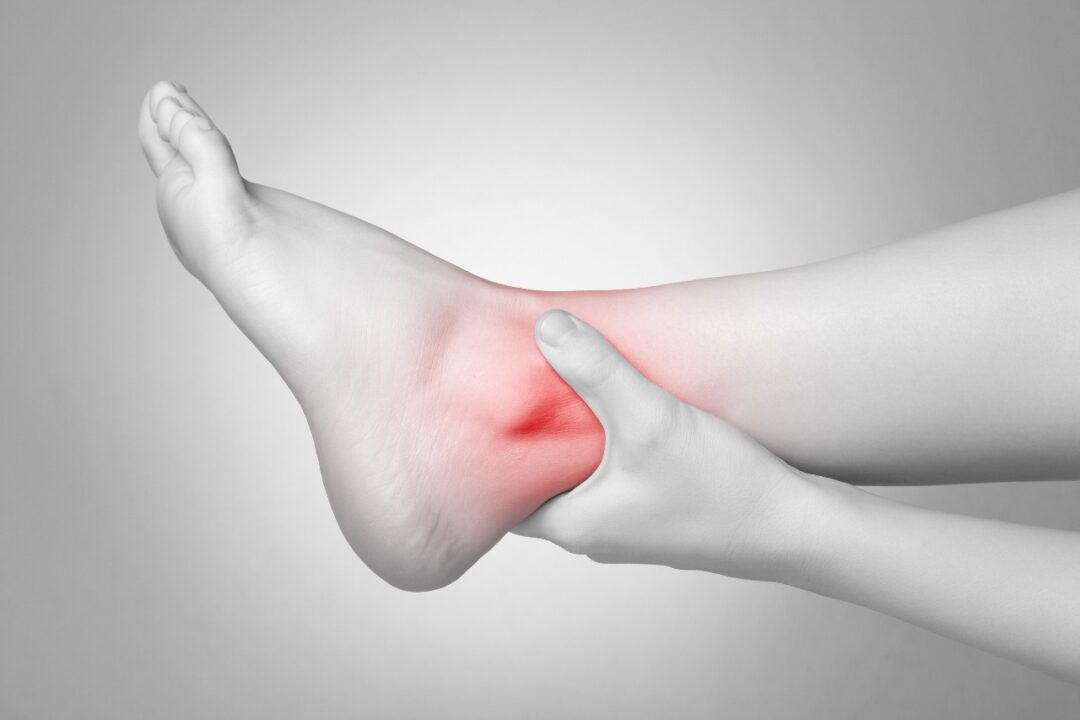How do I take care of an ankle sprain? |

Ankle sprains are the most common sport-related injury, with an estimated 28,000 occurring daily in the U.S. Fortunately, most of these injuries are Grade I or mild sprains of the ligaments on the lateral aspect (outside) of the ankle. Grade I sprains are characterized as a stretching of the ligament with mild pain and minimal loss of function. Recently, the National Athletic Trainers’ Association released a Position Statement that thoroughly discussed the conservative management and prevention of mild to severe ankle sprains in athletes.
Much of the information in this statement pertained to the more serious Grade II or III injuries. These injuries involve partial or complete tears of the ligaments that support the ankle with considerable pain and loss of function. These can take months to heal and sometimes even require surgery. The Position Paper provided information to doctors related to these more serious sprains, such as when to perform magnetic resonance imaging (MRI) following an ankle injury and when immobilization is the best initial treatment. In addition to information regarding higher grade sprains, the Position Paper offered a number of important “take home” messages that applied to anyone who inadvertently “rolls” their ankle, sustaining a minor sprain.
- RICE therapy (rest, ice, compression, and elevation) continues to be the most accepted and effective management of acute ankle sprains. Rest means keeping the ankle comfortable by avoiding activities that cause discomfort for at least 24 hours after the injury. Ice is typically applied for 20 to 30 minute periods following the acute injury and can be repeated at hourly intervals for the first couple of days. Compression is usually administered via an ACE wrap or soft ankle brace. Elevation (usually in combination with ice and compression) is especially beneficial in preventing swelling immediately after the injury.
- The Ottawa ankle rules, a means of determining the likelihood of an ankle fracture following an ankle sprain, were deemed to be reliable. These rules, developed to help doctors decide when to perform x-rays, involve a determination of the location of bone tenderness and the patient’s ability to bear weight following the sprain. From the perspective of a lay person assessing their own injury, being able to bear weight and walk more or less normally after an ankle injury practically eliminates the possibility of a significant fracture.
- Non-steroidal anti-inflammatory drugs (NSAIDs) were found to reduce pain and swelling and improve short-term function after ankle sprains. The NSAID, piroxicam, was mentioned in the position paper, but the widely available non-prescription NSAIDs, ibuprofen or naproxen, taken at recommended dosages, should be equally effective.
- Functional rehabilitation was found to be more effective than immobilization in managing minor ankle sprains. In other words, the use of a boot, avoiding bearing weight while on crutches, or the use of some other device to keep the ankle from moving is not the best way to manage a minor ankle sprain. Functional rehabilitation includes the use of range-of-motion, flexibility, and strengthening exercises with progressive weight bearing as tolerated. The following link outlines a comprehensive functional rehabilitation program.
Another important point from the Position Paper is that the most common cause of a repeat ankle sprain is an incompletely rehabilitated ankle following an initial sprain. Even though most minor ankle sprains will heal without long-term consequences, the importance of functional rehabilitation cannot be overemphasized. In the case of more serious sprains, medical evaluation and the guidance of a physical therapist or athletic trainer is the best course of action in order to assure complete recovery and avoidance or re-injury.
There was far more information included in the Position Paper than was covered in today’s Health Tip, including return-to-play recommendations, taping and bracing considerations, and management of chronic ankle sprains. To learn more about the management of ankle sprains, you can read the entire Position Paper published in the Journal of Athletic Training.
If you have any more questions just Ask Hanna, our health advisors are here to help.
Image: ©Shutterstock / Csaba Deli








